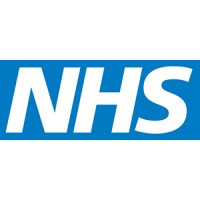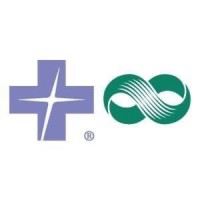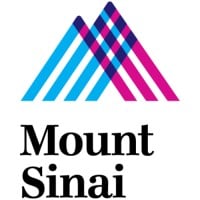Company Details
nhs
238,427
669,093
62
www.nhs.uk
0
NHS_2552503
In-progress

NHS Company CyberSecurity Posture
www.nhs.ukThe NHS was launched in 1948. It was born out of a long-held ideal that good healthcare should be available to all, regardless of wealth – one of the NHS's core principles. With the exception of some charges, such as prescriptions, optical services and dental services, the NHS in England remains free at the point of use for all UK residents. This currently stands at more than 64.6 million people in the UK and 54.3 million people in England alone. The NHS in England deals with over 1 million patients every 36 hours. It covers everything, including antenatal screening, routine screenings (such as the NHS Health Check), treatments for long-term conditions, transplants, emergency treatment and end-of-life care. Responsibility for healthcare in Northern Ireland, Scotland and Wales is devolved to the Northern Ireland Assembly, the Scottish Government and the Welsh Assembly Government respectively. The NHS employs more than 1.5 million people, putting it in the top five of the world’s largest workforces, together with the US Department of Defence, McDonalds, Walmart and the Chinese People’s Liberation Army. The NHS in England is the biggest part of the system by far, catering to a population of 54.3 million and employing around 1.2 million people. Of those, the clinically qualified staff include 150,273 doctors, 40,584 general practitioners (GPs), 314,966 nurses and health visitors, 18,862 ambulance staff, and 111,127 hospital and community health service (HCHS) medical and dental staff. The NHS in Scotland, Wales and Northern Ireland employs 161,415; 84,000 and 66,000 people respectively.
Company Details
nhs
238,427
669,093
62
www.nhs.uk
0
NHS_2552503
In-progress
Between 750 and 799

 NHS Global Score (TPRM)
NHS Global Score (TPRM)XXXX

Description: Islamist hackers associated with Isis launched a cyberattack on a number of NHS websites, revealing major security weaknesses. Patient data was allegedly vulnerable to the attacks.
Description: The NHS is blaming a coding error for 150,000 patients in England being involved in a data breach. There was a problem with the software used by GPs to record objections to the same data being used for research and auditing purposes. There is not any risk to patient care as a result of this error.
Description: Patient information was taken from an NHS appointment booking system by a computer whiz with connections to the international hacking group Anonymous. The criminal exploited a private contractor's security to gain access to a database that contained private information on up to 1.2 million people. Attack limited to names, dates of birth, phone numbers and, in some cases, email addresses. For the management of a website where patients can schedule appointments with a doctor, hospital, or clinic, eight NHS trusts have paid SwiftQueue. They also manage terminals that patients can use to check in when they arrive in the waiting areas.
Description: NHS trusts lost almost 10,000 patient records last year. The massive number of unavailable or lost documents also includes “many incidents” where the files were eventually located. Rather than ensconce patient data on encrypted platforms, the NHS often opts to use cheaper and more vulnerable means of recording , 94% of NHS Trusts still use handwritten notes for patient record keeping.
Description: NHS trusts are violating their promises to never share private information with Facebook on patients' medical conditions, appointments, and treatments. Investigations have found a hidden monitoring feature in 20 NHS trusts' websites that has been sharing users' browsing data with the internet giant for years in a serious privacy violation. Pages viewed, buttons clicked, and keyword searches are all described in depth in the data. It is compared to the user's IP address, which is an identifier associated with an individual or household, and in many cases, Facebook account information. NHS websites have transferred records of information to the company that include information that, when linked to an individual, could reveal personal medical information.


No incidents recorded for NHS in 2025.
No incidents recorded for NHS in 2025.
No incidents recorded for NHS in 2025.
NHS cyber incidents detection timeline including parent company and subsidiaries

The NHS was launched in 1948. It was born out of a long-held ideal that good healthcare should be available to all, regardless of wealth – one of the NHS's core principles. With the exception of some charges, such as prescriptions, optical services and dental services, the NHS in England remains free at the point of use for all UK residents. This currently stands at more than 64.6 million people in the UK and 54.3 million people in England alone. The NHS in England deals with over 1 million patients every 36 hours. It covers everything, including antenatal screening, routine screenings (such as the NHS Health Check), treatments for long-term conditions, transplants, emergency treatment and end-of-life care. Responsibility for healthcare in Northern Ireland, Scotland and Wales is devolved to the Northern Ireland Assembly, the Scottish Government and the Welsh Assembly Government respectively. The NHS employs more than 1.5 million people, putting it in the top five of the world’s largest workforces, together with the US Department of Defence, McDonalds, Walmart and the Chinese People’s Liberation Army. The NHS in England is the biggest part of the system by far, catering to a population of 54.3 million and employing around 1.2 million people. Of those, the clinically qualified staff include 150,273 doctors, 40,584 general practitioners (GPs), 314,966 nurses and health visitors, 18,862 ambulance staff, and 111,127 hospital and community health service (HCHS) medical and dental staff. The NHS in Scotland, Wales and Northern Ireland employs 161,415; 84,000 and 66,000 people respectively.

Fresenius Medical Care is the world’s leading provider of products and services for individuals with renal diseases. We aim to create a future worth living for chronically and critically ill patients – worldwide and every day. Thanks to our decades of experience in dialysis, our innovative research
NYU Langone Health is a fully integrated health system that consistently achieves the best patient outcomes through a rigorous focus on quality that has resulted in some of the lowest mortality rates in the nation. Vizient Inc. has ranked NYU Langone the No. 1 comprehensive academic medical center i

Advocate Aurora Health and Atrium Health are now Advocate Health – the fifth-largest nonprofit integrated health system in the U.S. Advocate Health is the fifth-largest nonprofit integrated health system in the United States –created from the combination of Advocate Aurora Health and Atrium Health

The Mount Sinai Health System is an integrated health system committed to providing distinguished care, conducting transformative research, and advancing biomedical education. Structured around seven hospital campuses and a single medical school, the Health System has an extensive ambulatory netwo

Penn Medicine’s mission is to advance knowledge and improve health through research, patient care, and the education of trainees in an inclusive culture that embraces diversity, fosters innovation, stimulates critical thinking, supports lifelong learning, and sustains our legacy of excellence. Penn

Leading Private Healthcare Provider in the Middle East With a vision to be the most trusted healthcare provider in medical excellence and patient experience globally, Dr. Sulaiman Al-Habib Medical Group (HMG) has become the largest provider of comprehensive healthcare services in the Middle East. A
A Dasa é a maior rede de saúde integrada do Brasil. Faz parte da vida de mais de 20 milhões de pessoas por ano, com alta tecnologia, experiência intuitiva e atitude à frente do tempo. Com mais de 50 mil colaboradores e 250 mil médicos parceiros, existe para ser a saúde que as pessoas desejam e que
Every day millions of people feel the impact of our intelligent devices, advanced analytics and artificial intelligence. As a leading global medical technology and digital solutions innovator, GE HealthCare enables clinicians to make faster, more informed decisions through intelligent devices, data

With us by your side, there's no stopping you. It's why we're creating a new kind of healthcare at Baylor Scott & White. And we're just getting started. As the largest not-for-profit health system in the state of Texas, Baylor Scott & White promotes the health and well-being of every individual, fa
.png)
Cyber attacks which threaten our access to water, energy and the NHS are costing the UK economy nearly £15bn a year.
Notorious ransomware gang Clop is back with another bold claim, this time insisting it hacked “the NHS,” The Register reports.
Ransomware gangsters claim to have attacked the NHS but clarity on the nature of the incident is yet to emerge.
The UK's National Health Service (NHS) is investigating claims of a cyberattack by extortion crew Clop. The cybercriminal gang, which in...
Ransomware gang Clop has claimed the United Kingdom's National Health Service among its latest victims. The NHS confirmed that it is listed...
The notorious Cl0p ransomware group has claimed responsibility for breaching the UK's National Health Service (NHS),...
The UK's national healthcare system is working with the country's National Cyber Security Centre to investigate the incident.
It needs to defend its digital backbone against attacks now costing the nation nearly £15 billion annually.
Synnovis has finally wrapped up its investigation into the 2024 ransomware attack that crippled pathology services across London,...

Explore insights on cybersecurity incidents, risk posture, and Rankiteo's assessments.
The official website of NHS is http://www.nhs.uk/.
According to Rankiteo, NHS’s AI-generated cybersecurity score is 771, reflecting their Fair security posture.
According to Rankiteo, NHS currently holds 0 security badges, indicating that no recognized compliance certifications are currently verified for the organization.
According to Rankiteo, NHS is not certified under SOC 2 Type 1.
According to Rankiteo, NHS does not hold a SOC 2 Type 2 certification.
According to Rankiteo, NHS is not listed as GDPR compliant.
According to Rankiteo, NHS does not currently maintain PCI DSS compliance.
According to Rankiteo, NHS is not compliant with HIPAA regulations.
According to Rankiteo,NHS is not certified under ISO 27001, indicating the absence of a formally recognized information security management framework.
NHS operates primarily in the Hospitals and Health Care industry.
NHS employs approximately 238,427 people worldwide.
NHS presently has no subsidiaries across any sectors.
NHS’s official LinkedIn profile has approximately 669,093 followers.
NHS is classified under the NAICS code 62, which corresponds to Health Care and Social Assistance.
No, NHS does not have a profile on Crunchbase.
Yes, NHS maintains an official LinkedIn profile, which is actively utilized for branding and talent engagement, which can be accessed here: https://www.linkedin.com/company/nhs.
As of November 27, 2025, Rankiteo reports that NHS has experienced 5 cybersecurity incidents.
NHS has an estimated 29,991 peer or competitor companies worldwide.
Incident Types: The types of cybersecurity incidents that have occurred include Data Leak and Cyber Attack.
Title: Isis-Linked Cyberattack on NHS Websites
Description: Islamist hackers associated with Isis launched a cyberattack on a number of NHS websites, revealing major security weaknesses. Patient data was allegedly vulnerable to the attacks.
Type: Cyberattack
Vulnerability Exploited: Security weaknesses in NHS websites
Threat Actor: Islamist hackers associated with Isis
Title: NHS Trusts Data Loss Incident
Description: NHS trusts lost almost 10,000 patient records last year. The massive number of unavailable or lost documents also includes “many incidents” where the files were eventually located. Rather than ensconce patient data on encrypted platforms, the NHS often opts to use cheaper and more vulnerable means of recording, 94% of NHS Trusts still use handwritten notes for patient record keeping.
Type: Data Loss
Title: NHS Appointment Booking System Data Breach
Description: Patient information was taken from an NHS appointment booking system by a computer whiz with connections to the international hacking group Anonymous. The criminal exploited a private contractor's security to gain access to a database that contained private information on up to 1.2 million people.
Type: Data Breach
Attack Vector: Exploiting private contractor's security
Threat Actor: Individual with connections to Anonymous
Title: NHS Data Breach Due to Coding Error
Description: A coding error in the software used by GPs to record objections to data being used for research and auditing purposes resulted in a data breach affecting 150,000 patients in England.
Type: Data Breach
Attack Vector: Software Coding Error
Vulnerability Exploited: Coding Error
Title: NHS Trusts Data Sharing with Facebook
Description: NHS trusts are violating their promises to never share private information with Facebook on patients' medical conditions, appointments, and treatments. Investigations have found a hidden monitoring feature in 20 NHS trusts' websites that has been sharing users' browsing data with the internet giant for years in a serious privacy violation. Pages viewed, buttons clicked, and keyword searches are all described in depth in the data. It is compared to the user's IP address, which is an identifier associated with an individual or household, and in many cases, Facebook account information. NHS websites have transferred records of information to the company that include information that, when linked to an individual, could reveal personal medical information.
Type: Data Breach
Attack Vector: Hidden Monitoring Feature
Vulnerability Exploited: Data Sharing with Third-Party
Threat Actor: Facebook
Motivation: Data Collection
Common Attack Types: The most common types of attacks the company has faced is Data Leak.

Data Compromised: Patient records

Data Compromised: Names, Dates of birth, Phone numbers, Email addresses
Systems Affected: Appointment booking system

Data Compromised: Patient Data

Data Compromised: Pages viewed, Buttons clicked, Keyword searches, Ip addresses, Facebook account information
Commonly Compromised Data Types: The types of data most commonly compromised in incidents are Patient Data, , Patient records, Names, Dates Of Birth, Phone Numbers, Email Addresses, , Patient Data, Pages Viewed, Buttons Clicked, Keyword Searches, Ip Addresses, Facebook Account Information and .

Entity Name: NHS Trusts
Entity Type: Healthcare
Industry: Healthcare
Location: United Kingdom

Entity Name: SwiftQueue
Entity Type: Private Contractor
Industry: Healthcare
Customers Affected: 1.2 million

Entity Name: NHS
Entity Type: Healthcare Provider
Industry: Healthcare
Location: England
Customers Affected: 150,000 patients

Entity Name: NHS Trusts
Entity Type: Healthcare
Industry: Healthcare
Location: United Kingdom

Type of Data Compromised: Patient data

Type of Data Compromised: Patient records
Number of Records Exposed: 10,000

Type of Data Compromised: Names, Dates of birth, Phone numbers, Email addresses
Number of Records Exposed: 1.2 million
Sensitivity of Data: Personal Information

Type of Data Compromised: Patient Data
Number of Records Exposed: 150,000
Sensitivity of Data: High
Personally Identifiable Information: Yes

Type of Data Compromised: Pages viewed, Buttons clicked, Keyword searches, Ip addresses, Facebook account information
Sensitivity of Data: High
Data Exfiltration: Yes
Personally Identifiable Information: Yes

Lessons Learned: The NHS should consider using more secure and encrypted platforms for patient record keeping rather than handwritten notes.

Recommendations: Implement encrypted platforms for patient record keeping to prevent data loss.
Key Lessons Learned: The key lessons learned from past incidents are The NHS should consider using more secure and encrypted platforms for patient record keeping rather than handwritten notes.
Implemented Recommendations: The company has implemented the following recommendations to improve cybersecurity: Implement encrypted platforms for patient record keeping to prevent data loss..

Root Causes: Use of handwritten notes for patient record keeping
Corrective Actions: Transition to encrypted digital platforms for record keeping

Root Causes: Coding Error
Corrective Actions Taken: The company has taken the following corrective actions based on post-incident analysis: Transition to encrypted digital platforms for record keeping.
Last Attacking Group: The attacking group in the last incident were an Islamist hackers associated with Isis, Individual with connections to Anonymous and Facebook.
Most Significant Data Compromised: The most significant data compromised in an incident were Patient data, , Patient records, names, dates of birth, phone numbers, email addresses, , Patient Data, Pages viewed, Buttons clicked, Keyword searches, IP addresses, Facebook account information and .
Most Significant System Affected: The most significant system affected in an incident was NHS websites and .
Most Sensitive Data Compromised: The most sensitive data compromised in a breach were Patient records, dates of birth, Patient Data, IP addresses, email addresses, names, phone numbers, Facebook account information, Patient data, Buttons clicked, Pages viewed and Keyword searches.
Number of Records Exposed in Most Significant Breach: The number of records exposed in the most significant breach was 1.4M.
Most Significant Lesson Learned: The most significant lesson learned from past incidents was The NHS should consider using more secure and encrypted platforms for patient record keeping rather than handwritten notes.
Most Significant Recommendation Implemented: The most significant recommendation implemented to improve cybersecurity was Implement encrypted platforms for patient record keeping to prevent data loss..
Most Significant Root Cause: The most significant root cause identified in post-incident analysis was Use of handwritten notes for patient record keeping, Coding Error.
Most Significant Corrective Action: The most significant corrective action taken based on post-incident analysis was Transition to encrypted digital platforms for record keeping.
.png)
Angular is a development platform for building mobile and desktop web applications using TypeScript/JavaScript and other languages. Prior to versions 19.2.16, 20.3.14, and 21.0.1, there is a XSRF token leakage via protocol-relative URLs in angular HTTP clients. The vulnerability is a Credential Leak by App Logic that leads to the unauthorized disclosure of the Cross-Site Request Forgery (XSRF) token to an attacker-controlled domain. Angular's HttpClient has a built-in XSRF protection mechanism that works by checking if a request URL starts with a protocol (http:// or https://) to determine if it is cross-origin. If the URL starts with protocol-relative URL (//), it is incorrectly treated as a same-origin request, and the XSRF token is automatically added to the X-XSRF-TOKEN header. This issue has been patched in versions 19.2.16, 20.3.14, and 21.0.1. A workaround for this issue involves avoiding using protocol-relative URLs (URLs starting with //) in HttpClient requests. All backend communication URLs should be hardcoded as relative paths (starting with a single /) or fully qualified, trusted absolute URLs.
Forge (also called `node-forge`) is a native implementation of Transport Layer Security in JavaScript. An Uncontrolled Recursion vulnerability in node-forge versions 1.3.1 and below enables remote, unauthenticated attackers to craft deep ASN.1 structures that trigger unbounded recursive parsing. This leads to a Denial-of-Service (DoS) via stack exhaustion when parsing untrusted DER inputs. This issue has been patched in version 1.3.2.
Forge (also called `node-forge`) is a native implementation of Transport Layer Security in JavaScript. An Integer Overflow vulnerability in node-forge versions 1.3.1 and below enables remote, unauthenticated attackers to craft ASN.1 structures containing OIDs with oversized arcs. These arcs may be decoded as smaller, trusted OIDs due to 32-bit bitwise truncation, enabling the bypass of downstream OID-based security decisions. This issue has been patched in version 1.3.2.
Suricata is a network IDS, IPS and NSM engine developed by the OISF (Open Information Security Foundation) and the Suricata community. Prior to versions 7.0.13 and 8.0.2, working with large buffers in Lua scripts can lead to a stack overflow. Users of Lua rules and output scripts may be affected when working with large buffers. This includes a rule passing a large buffer to a Lua script. This issue has been patched in versions 7.0.13 and 8.0.2. A workaround for this issue involves disabling Lua rules and output scripts, or making sure limits, such as stream.depth.reassembly and HTTP response body limits (response-body-limit), are set to less than half the stack size.
Suricata is a network IDS, IPS and NSM engine developed by the OISF (Open Information Security Foundation) and the Suricata community. In versions from 8.0.0 to before 8.0.2, a NULL dereference can occur when the entropy keyword is used in conjunction with base64_data. This issue has been patched in version 8.0.2. A workaround involves disabling rules that use entropy in conjunction with base64_data.

Get company history
















Every week, Rankiteo analyzes billions of signals to give organizations a sharper, faster view of emerging risks. With deeper, more actionable intelligence at their fingertips, security teams can outpace threat actors, respond instantly to Zero-Day attacks, and dramatically shrink their risk exposure window.
Identify exposed access points, detect misconfigured SSL certificates, and uncover vulnerabilities across the network infrastructure.
Gain visibility into the software components used within an organization to detect vulnerabilities, manage risk, and ensure supply chain security.
Monitor and manage all IT assets and their configurations to ensure accurate, real-time visibility across the company's technology environment.
Leverage real-time insights on active threats, malware campaigns, and emerging vulnerabilities to proactively defend against evolving cyberattacks.




